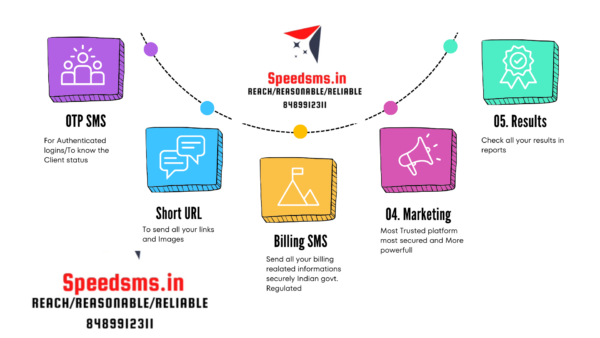Description
Bulk SMS marketing has emerged as an invaluable tool for effective communication in the educational sector, transforming how schools and colleges interact with students, parents, and faculty. The average open rate for bulk SMS marketing is between 95% and 99%. This is significantly higher than the average open rate for email marketing, which is around 20%.
There are several reasons why SMS messages have such a high open rate. First, they are short and to the point, so people are more likely to read them. Second, they are delivered directly to people’s phones, making them more likely to see them. Third, people are generally more receptive to text messages than other forms of communication, such as email.
The open rate for bulk SMS marketing can vary depending on several factors, such as the industry, the time of day the message is sent, and the content of the message. For example, messages that are sent during business hours are more likely to be opened than messages that are sent at night. Additionally, messages that are personalized or that offer a discount are more likely to be opened than messages that are generic or that do not offer any incentive.
Here are Some Additional Statistics about Bulk SMS Marketing
Click-through rate: The average click-through rate for bulk SMS marketing is around 4%. This is higher than the average click-through rate for email marketing, which is around 2%.
Conversion rate: The average conversion rate for bulk SMS marketing is around 2%. This is comparable to the average conversion rate for email marketing.
Return on investment (ROI): The average ROI for bulk SMS marketing is around 300%. This is significantly higher than the average ROI for email marketing, which is around 200%.
Let’s explore how Bulk SMS Marketing for educational institutions fosters better communication and engagement within their communities.
Benefits Of Bulk SMS Marketing for Educational Institutions
1. Instant Communication
Bulk SMS for schools and colleges to enable prompt dissemination of critical information to a wider audience. It ensures instantaneous communication about various events, examinations, fee reminders, emergencies, and other essential updates, reaching recipients within seconds.
2. Parental Engagement
It serves as a direct channel to keep parents informed about their child’s academic progress, attendance records, exam schedules, and upcoming meetings or events. This transparency promotes parental involvement and enhances the overall learning experience.
3. Event Promotion
Educational institutions can efficiently promote extracurricular activities, cultural events, seminars, and workshops among students, parents, and faculty. It will create awareness about the event among many people by sending timely notifications.
4. Fee Reminders and Payment Updates
Bulk SMS service aids in sending fee reminders, payment confirmations, and due date alerts to parents, ensuring streamlined financial transactions and reducing delays in fee submissions.
5. Emergency Alerts
In cases of emergencies like school closures due to unexpected circumstances or weather conditions, Bulk SMS enables immediate communication of vital information to students, parents, and staff, ensuring their safety and well-being.
6. Exam-related Communication
Bulk SMS for Schools and colleges can effectively communicate exam timetables, changes in schedules, result announcements, and subsequent procedures to students through SMS, helping them stay updated on academic timelines.
7. Feedback Collection
Bulk SMS offers a convenient platform for schools to collect feedback and conduct surveys among parents, students, and staff. This helps institutions gain insights for improving their services and facilities.
8. Attendance Monitoring
Institutions can notify parents about their child’s attendance, including absenteeism, late arrivals, or unexpected holidays, fostering accountability and awareness regarding student attendance.



